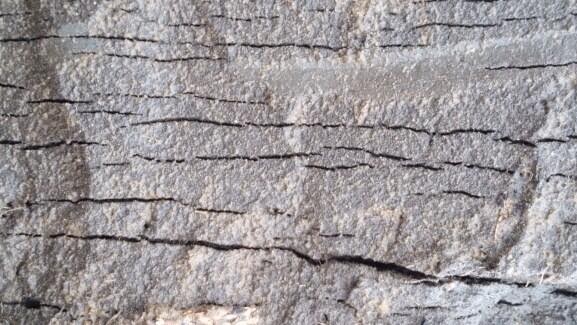The previous owner followed a typical corn, soybean and wheat cash crop rotation using conventional tillage techniques. The evidence of a hardpan at about the 6 inch level is disconcerting to say the least. We can only assume this developed by running tillage implements at the wrong time and the same depth year after year.
The worst spots in the field were found on the knolls. The top soil, or A horizon, which contains 99% of the nutrients necessary to produce crops is shallow. We have known about the effects of tillage erosion for many years. I first heard this concept explained by David Lobb who did his graduate thesis on the topic at the University of Guelph in the early 90's. Tillage tools are very effective at dragging topsoil from high spots to low spots. Moldboard plows and field cultivators are the best at moving soil quickly and the faster you pull them, the worse it gets. Reduced tillage techniques keep the valuable topsoil in place over the knolls.
This is another shot of a hard pan that was cracked horizontally by frost. This is not that beneficial in my opinion. The soil will just settle back into its former rock like state. The never ending question surrounds whether you can shatter a hard pan with tillage. I have always believed soils need to be dry for steel to have any permanent effect on a hard pan.
Where the hardpan was absent the cracking was vertical. Root channels and earthworm holes are a lot more permanent than any channel we try to make with a tillage tool. This is what we would like to see every where in the field. Vertical cracks allow roots to grow easily. The plant benefits by finding water and nutrients with less effort.
The last thing I wanted to point out was the frost lines found deep in the soil. We have not seen this much frost penetration in fields for a long time. I wondered at the time how quickly this frost would come out. The warm rains over the last few days have been very timely and purged the frost out of most fields. I think seedbeds will come along nicely once they dry out.
Temperatures are forecast to remain seasonable from the Easter weekend through to the end of the month. If the sun shines there will be some corn planted in April. Last week I did not think that would happen.




Russ when you get a summer drought that cracks soils deep (our clays anyways) does that do as good as ripping at 0 cost? Frost will help the surface issuesbut can only "heave up" so much as it can't expand below ...Was at Alma yesterday,it will be a few days before corn planters can roll-kevin
ReplyDelete